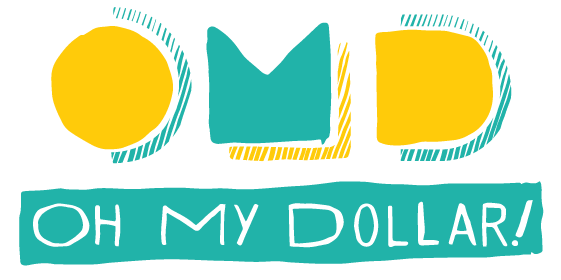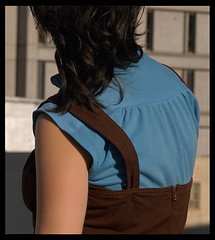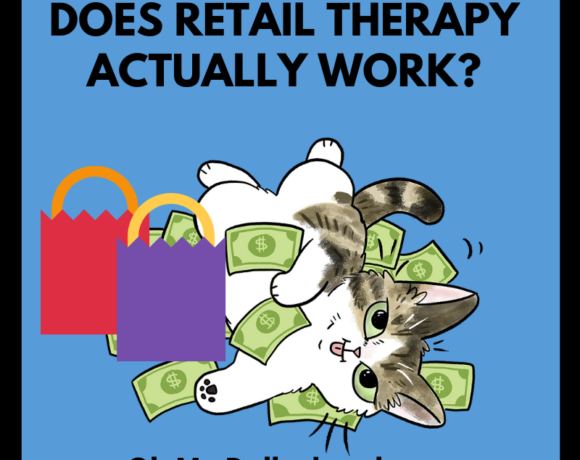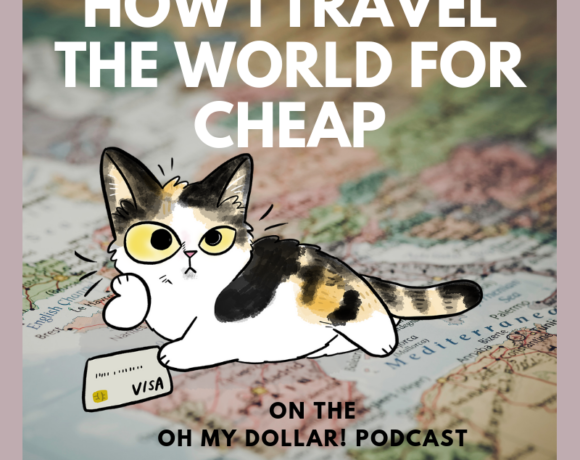
A lot of people have asked me about my own budget. For quite awhile, I’ve been hesitant to share it because I don’t want anyone think this is blueprint for their own budget. As I’ve said many times, your budget is a reflection of your values & your life circumstances. Unless you are exactly the same as me, this budget will not be a blueprint for you. It’s just *my* budget.
But I have decided to share it with you, because people commonly ask how I can afford to save so much & travel frequently despite a modest income.
Why my income is missing from this post
There’s something that’s missing from this you might find odd: my income. This isn’t because I want to hide my income from you, it’s because my income is variable – I may make $30,000 this year, or I might make $60,000 (I can hope!) – but here’s the important takeaway: your expenses do not have to equal your income.
Your budget is informed by your income but your income is not the only factor in your budget. What you want to do with your life and your values are two of the biggest deciding factors in your budget. Many people get stuck in the trap of thinking their expenses and their income are always magically identical and get stuck in a cycle of lifestyle inflation when their income goes up.
In the nonprofit world, we call this “revenue driven expenses” – this is the (discouraged) practice of creating entirely new programs in order to fit grant funding instead of seeking funding for the work you’re already doing. Nonprofits operate best when they’re pursuing their mission in the most effective way possible – and you’re the same way. You have values, and you have a mission. So don’t fall into the trap of revenue-driven expenses. When you get a raise at work, that doesn’t mean you immediately need to run out and get a bigger car or better apartment or spend more on drinks or suits to keep up with your colleagues. Your expenses are, at least to some extent, within your control.
I have also not thoroughly broken out my savings categories because I have variable income and half my work is self-employed. Any time money comes in from my business, after paying business expenses and taxes, I try to put nearly all of that into my retirement accounts. I like to reduce the amount of taxes I pay and prioritize saving for my future, so many of my business goals are based on being able to maximize my retirement account contributions.
What isn’t in the budget
There are some expenses you might miss on here: A car or car-related expenses. I don’t have one, and never have. This makes sense for me, it may not make any sense for you. I live in a city where it’s delightful to get around by bike, and in the case of terrible weather like Snowpocolypse 2017, I leave the driving to the professionals on TriMet. Like everything else in my budget, this is a trade off: I choose to rent close-in where biking is easy – and just 2 blocks from a Transit Center. This means I pay slightly more rent for less space than I might if I lived in a less bikeable or transit-friendly part of town.
I also don’t have my cell phone listed because that expense is paid for by my business.One of the perks of being self-employed! (For a possibly embarrassingly long time, I was on my parent’s family plan).
Why My Heath Insurance is Nearly Half my Rent
My health insurance is a large portion of my expenses. While this technically is paid for by the business, I include it in my personal expenses because if I were to stop working, I would still need to cover it. In the TMI category, I have Rheumatoid Arthritis that is luckily almost 100% treated by a very expensive biological drug. Before we tried that drug, we tried everything cheaper. Unfortunately, this drug was the only thing that worked for me – with the sticker price to go along with its effectiveness.
That drug costs $3,000 for 4 weekly doses, means it clocks in at $36,000 each year. This would obviously be unaffordable to me on its own. There is a co-pay assistance program for the drug from the company that makes it, which brings the $2000 co-pay cost to me down to just $10 a month. This means I hit my out-of-pocket maximum before spring (the drug company’s co-pay assistance counts towards my portion), so all other doctor’s visits or prescription drugs are “free” to me the rest of the calendar year. So I time any medical visits I can control until the second half of the year. We talked about in the last episode of Oh My Dollar! how health insurance may change for self-employed folks.
Why do you pay so much for fitness?
At ~$55 a month on fitness expenses, I could easily travel to an extra country each year if I would just run outside or do yoga in my house instead of having a gym membership. But for me, a regular fitness program is part of my values – I value my health and I value the community of a gym. I also work from home 5 days a week, so the gym forces me to get out of the house every day. I’m a former competitive athlete and coach, so I know what I need. When it comes to fitness, I know what works for me and I’m willing to pay for it. For other folks, this might be more on restaurants or going to soccer games – you do you!
So here are the hard numbers!
Essentials: $964
- Rent: $615 (I have a roommate/snuggly person/robot builder)
- Water/Sewer/Garbage: $30
- Internet: $20
- Electricity: $27
- Local transport + Bike: $10
- Health insurance: $231
- Co-pays: $10
- Household Goods (toothpaste, detergent): $10
- Renter’s Insurance: $11
Food & Drink: $253
- Groceries: $155
- Farm Share : $20/month
This farm share subscription covers all of my vegetables from June – November, and I pay annually for one half share so this is the sinking fund. - Beer/Liquor for Home: $20
I’m not currently drinking, but this is for months when I am. - Bars: $20
This carries over month to month. Some months I use $0, but other months – like during Pedalpalooza or when traveling – I make up the difference - Restaurants: $25
The same as above – some months I spend nothing, but when traveling, I burn through this. Luckily when I travel for work, dining out expenses are paid for by the business (or directly by the client.) - Sparking Water C02 Refill: $3/month
I have a SodaStream we obtained for free, and I drink sparkling water mocktails nightly. It costs $18 to refill the C02 and we go through one every 3-4 months. - Coffee: $10
This is for coffee out. It really should be labeled “stop working in my home office” fund.
Discretionary: $131.25
- Fitness membership: $40
- Assorted fitness-related expenses: $12
This covers new running shoes or stretching bands. - Clothing & Shoes: $62.50
I pre-funded my wardrobe category with $750 this year to do an overhaul, so this is the monthly breakout. The whole wardrobe replacement story is a big project I’ll cover another time. - Haircuts: $13.75
This is a sinking fund for a $55 expense including tip every 4 months and one part of my lifestyle inflation as I’ve made more money – so much better than the terrible punk rock mohawks of my early 20’s. - Gifts: $10
This is a sinking fund for small tokens on birthdays – such as paying for a drink or for flowers. I am not Christian so I do not celebrate Christmas so I don’t need to plan for those gifts. - Lazy Tax: $5
A fund for library fines or Postmate delivery fees, because, let’s be honest, I end up paying for them at some point.
Super Discretionary: $225
- Trans-Siberian Trip Fund: $200
My big trip this year will be a lifelong dream: nearly a month spent traversing Mongolia on the Trans-siberian railway, covering 4 countries and flying back through Seoul. I’ve been saving for this for a few years and have $2000 stored up for it already. Though I’ll be doing budget travel, I am prepared for this trip to cost as much as ~$3000 between visa fees, food, & lodging – my flights, aside from minor fees, are covered through travel hacking (see below).
- Travel Hacking Costs: $25
This covers credit card annual fees & transaction fees for credit cards I use for travel hacking. This is a hobby for the truly motivated and organized but it can pay great dividends -such as the free flights to Russia & China I’ll be taking this year. If you’re interested in learning more and hold no non-mortgage debt, check out the Travel Hacking Cartel.
Charitable: $83
I contribute to 3 organizations monthly, and the rest of this an average of my annual donations. I aim for 5-10% of my annual spending in charitable contributions. I would like to get this higher than it is currently.
Savings: $458-2000
- Roth IRA: $458 (maxes out at $5,500 annually)
- Solo 401K: Varies based on my income – between $100 – $1200
What about the unexpected?
I don’t currently save towards covering unexpected expenses – the great part of having budgeted & tracked all my expenses for years is that I can predict many of my “known unknowns” and have sinking funds for those costs included above. I have a fair amount of grace in this budget and can move things around if something comes up.
I maintain $8,000 set aside for an emergency fund in a money market account (This represents: 6 months of living expenses OR 2 months expenses plus the deductible on my health insurance OR 2 months of living expenses plus an emergency ticket home from around the world) for the true emergencies.
Obviously, this might be lower than the emergency fund that makes sense for you – I have multiple jobs, so I’m less worried about losing all my income at once, I have no debt and no dependents, I don’t own a car, and because of my medication/co-pay assistance situation, I have a low likelihood of owing my entire out-of-pocket-maximum on my health insurance all at once.
I also keep a “buffer” of one month’s expenses in my checking account at all times, which gives me some grace to wiggle around if a category goes over. It took me about 3 months to save up my “buffer” – and it was completely worth it. The buffer means I am never, ever worried about a check bouncing and if I overspend on a category like groceries- I have some time to adjust my spending to make up the difference without going into the red.
I have made the choice to make my budget reflect my values. I am willing to spend a little less in other areas – dining out, drinking alcohol, renting a smaller home, not owning a car, in order to splurge on the things that reflects my values – community, travel, health, charity, security, and art.







